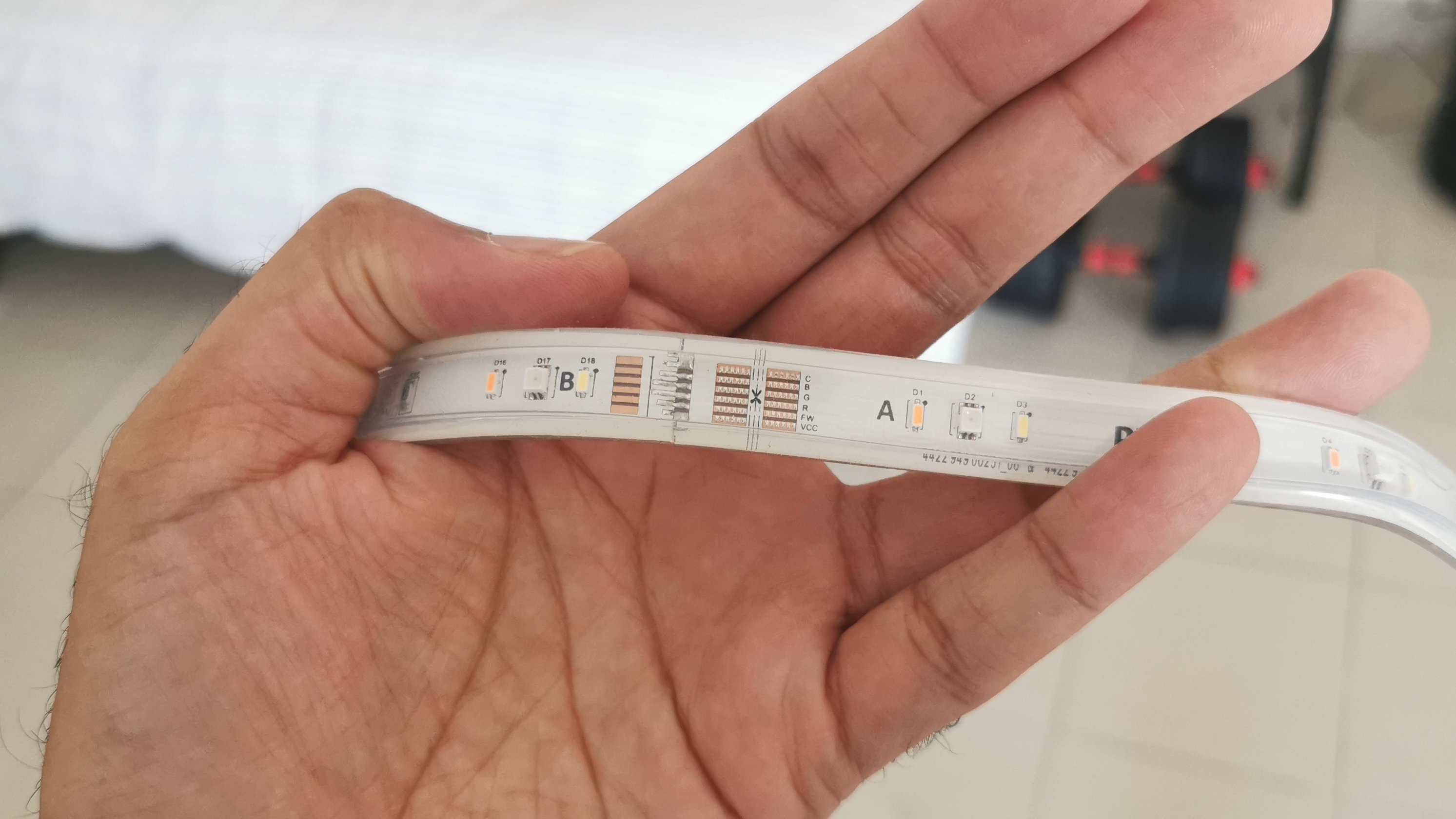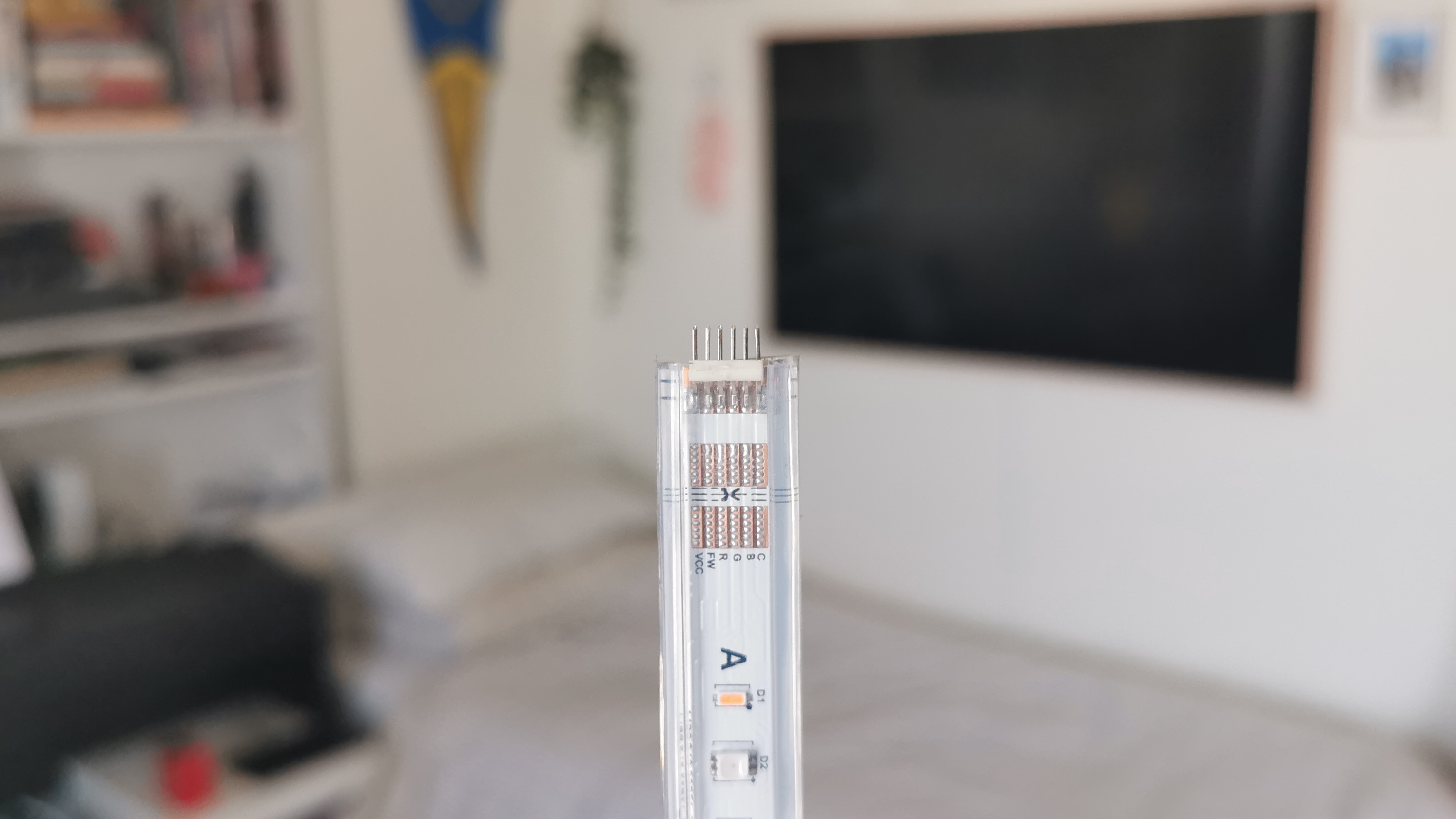One-minute review
Accent lighting is a great addition to any space, and the Philips Hue Lightstrip Plus is definitely something to consider. These LED strips are easy to set up, and while Hue lights previously required a Hue Bridge to work, you can still control the Hue Lightstrip Plus via Bluetooth or Zigbee. Of course, pairing them with a Hue Bridge unlocks their full potential, but for everyday control and settings, Bluetooth mode will work just fine.
They’re also incredibly bright, and are easy to shape around most areas such as under countertops, skirting, or bend down stairs. You’ve also got the option of choosing just white lighting or a gamut of colors instead, making it easy to set the mood in any space.
Need to adjust their size? Simply tack on additional lights to easily extend the Hue Lightstrip Plus, or even cut them down to whatever size you prefer. There’s a good amount of flexibility on offer, and their durability is second to none. A lengthy power cord also ensures you can tuck any cables away, for a clean and pristine setup.
The Hue Lightstrip Plus might be on the pricier side of what’s available on the market, but there’s good reasoning for it – the build quality, ease of setup, and Hue ecosystem is unmatched by any other brand. You’re getting a fantastic lightstrip package here that can be adapted to almost any space, while still being discreet enough to tuck behind counters, headboards, and more.
Price and availability
The Hue Lightstrip Plus retails for $79.99 / £69.99 / AU$134,95 for a 80-inch (2m) version. Additional 40-inch (1m) extensions are available at $24.99 / £19.99 / AU$49.95, and can be extended for a total of 33ft (10m).
Design
The Hue Lightstrip Plus looks like any other lightstrip you may buy, and tries to be as unobtrusive as possible with its design. The strip itself consists of tiny LED lights grouped together in certain sections, covered by a thick transparent plastic. At the back is an adhesive backing that lets you stick the lights to pretty much any flat surface.

A neat trick about Hue Lightstrip Plus is that they can also be cut to a shorter length, if required. There are specially marked areas on the strip where you can cut them, so as long as you’re only cutting on these lines, you can then reattach the cut strips later by using a special clip that clamps down on the two halves. Philips only includes one such clip in the box, and it’s important to note that this reattachment ability will only work with newer lightstrips. Should you require even more length, you can easily attach extension strips which slot into small ports at each end.


At the other end of the Hue Lightstrip Plus you have a small connector box that the lights plug into. This in turn connects to a longer power cord which ends in a fairly chunky power adapter. The connector box also has adhesive on the back of it, so you can easily hide it away. Hiding the cabling might be a different challenge, so be mindful of where you install this as you’ll end with a trail of visible white cable.


Setup and Performance
Setting up the Hue Lightstrip Plus is remarkably easy – just figure out where you want to place them, peel off the adhesive backing, and stick it firmly in place. Once installed, just turn the lights on and you’re done.
There might be a slight bit of confusion when it comes to the companion app – there are two available for download. One is exclusively for controlling the lights via Bluetooth, while the other is only usable if you’re paring the Hue Lightstrip Plus with a Hue Bridge. We downloaded the Bluetooth-only app at first, and it easily detected our newly installed lights.

In terms of color and brightness, the Hue Lightstrip Plus has a color temperature range of 2,000-6,500K, with a maximum brightness of 1600 lumens. There are quick presets in the app to switch the lighting to modes such as reading, nighttime, or just lightly illuminate an area such as the floor.
Control via the app is quite user-friendly, and you can set up some limited automation such as waking up to the lights gradually increasing in brightness, or set a timer when they can turn off. The lights also integrate with Google Home and Amazon Alexa, so once linked you’ll be able to control them without reaching for your phone. Apple HomeKit support is only available if you’ve connected the lights to a Hue Bridge.
That brings us to an important point – while you can most certainly control the Hue Lightstrip Plus through Bluetooth or Zigbee devices, they are much, much better when paired with a Huge Bridge. The pairing process is extremely simple, and the Hue app shows you exactly how to pair them as well as transfer over all of your preferences and light settings.
Once paired with the Hue Bridge, you can control your lights from anywhere in your house, as well as set up more complicated routines and assigned them into groups. The lights are quick to respond both via Bluetooth or through the Hue Bridge, and changing colors and light temperature requires just a few taps. The only slight hitch is that you can’t quite animate the lights in any way, so if you wanted some rainbow colors to sync with your music or highlight only certain parts of the light strip, you’ll be disappointed. Choosing a particular color changes the entire strip, so there are limits to how much fun these lights will be.
Despite its flawless performance and great looks, it’s hard to ignore the $80 asking price, especially if you start adding in more lights at $25 a pop. While the Hue ecosystem works beautifully, budget-conscious homeowners might end up looking elsewhere, but for those who can afford to spend on it, the Philips Hue Lightstrip Plus offers great lighting performance that you have to see to believe.
Should I buy the Philips Hue Lightstrip Plus?

Buy it if…
You want stylish lighting
The Hue Lightstrip Plus can be set up and hidden away almost anywhere, so you’ll spend a considerable amount of time first trying to decide which corner of your house you’ll want to illuminate.
You need something bright
Whether you’re lighting up an entire countertop or just enough light so you can walk to the bathroom at night, the Hue Lightstrip Plus shines brightly under any circumstance.
You already own Hue lights
Integrating with a Hue Bridge really opens up the Hue Lightstrip Plus, so if you’re already invested in the Hue ecosystem, these lights will be a no-brainer.
Don’t buy it if…
You’re on a budget
These lights are expensive for a reason, so if you’re not thrilled with the price tag or the idea of forking out more for extensions, then you might want to look at cheaper alternatives.
You want specific lighting control
One drawback with the Hue Lightstrip Plus is that the entire strip changes to one particular color, so more nuanced lighting schemes are going to be difficult to pull off here.
from TechRadar - All the latest technology news https://ift.tt/3sW1kGz
Comments
Post a Comment